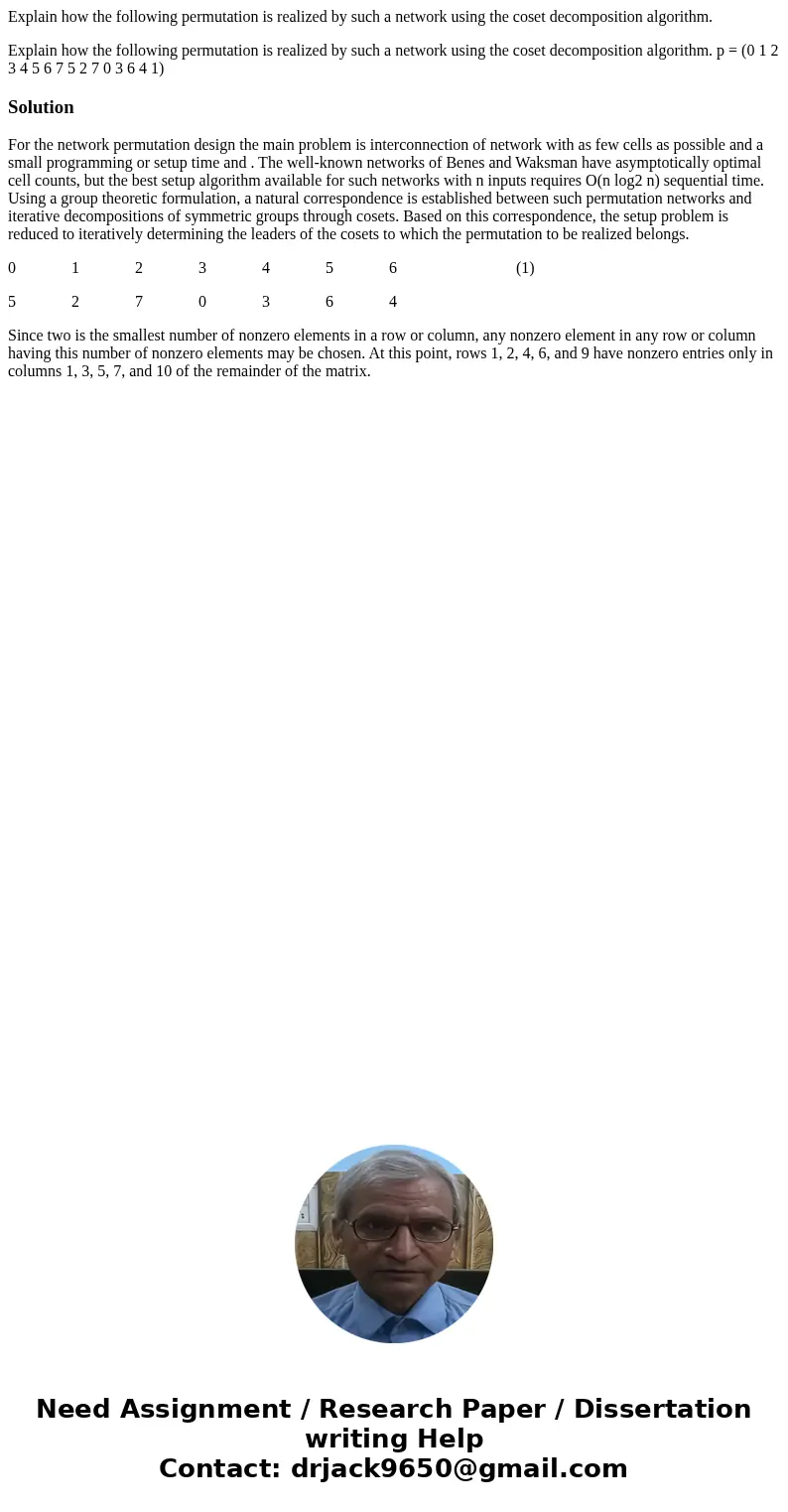Explain how the following permutation is realized by such a
Explain how the following permutation is realized by such a network using the coset decomposition algorithm.
Explain how the following permutation is realized by such a network using the coset decomposition algorithm. p = (0 1 2 3 4 5 6 7 5 2 7 0 3 6 4 1)Solution
For the network permutation design the main problem is interconnection of network with as few cells as possible and a small programming or setup time and . The well-known networks of Benes and Waksman have asymptotically optimal cell counts, but the best setup algorithm available for such networks with n inputs requires O(n log2 n) sequential time. Using a group theoretic formulation, a natural correspondence is established between such permutation networks and iterative decompositions of symmetric groups through cosets. Based on this correspondence, the setup problem is reduced to iteratively determining the leaders of the cosets to which the permutation to be realized belongs.
0 1 2 3 4 5 6 (1)
5 2 7 0 3 6 4
Since two is the smallest number of nonzero elements in a row or column, any nonzero element in any row or column having this number of nonzero elements may be chosen. At this point, rows 1, 2, 4, 6, and 9 have nonzero entries only in columns 1, 3, 5, 7, and 10 of the remainder of the matrix.

 Homework Sourse
Homework Sourse